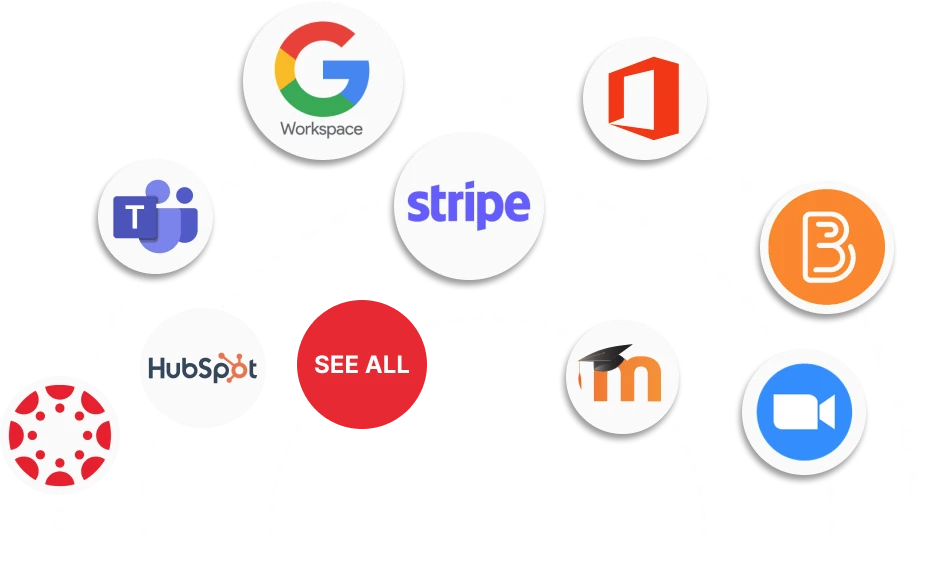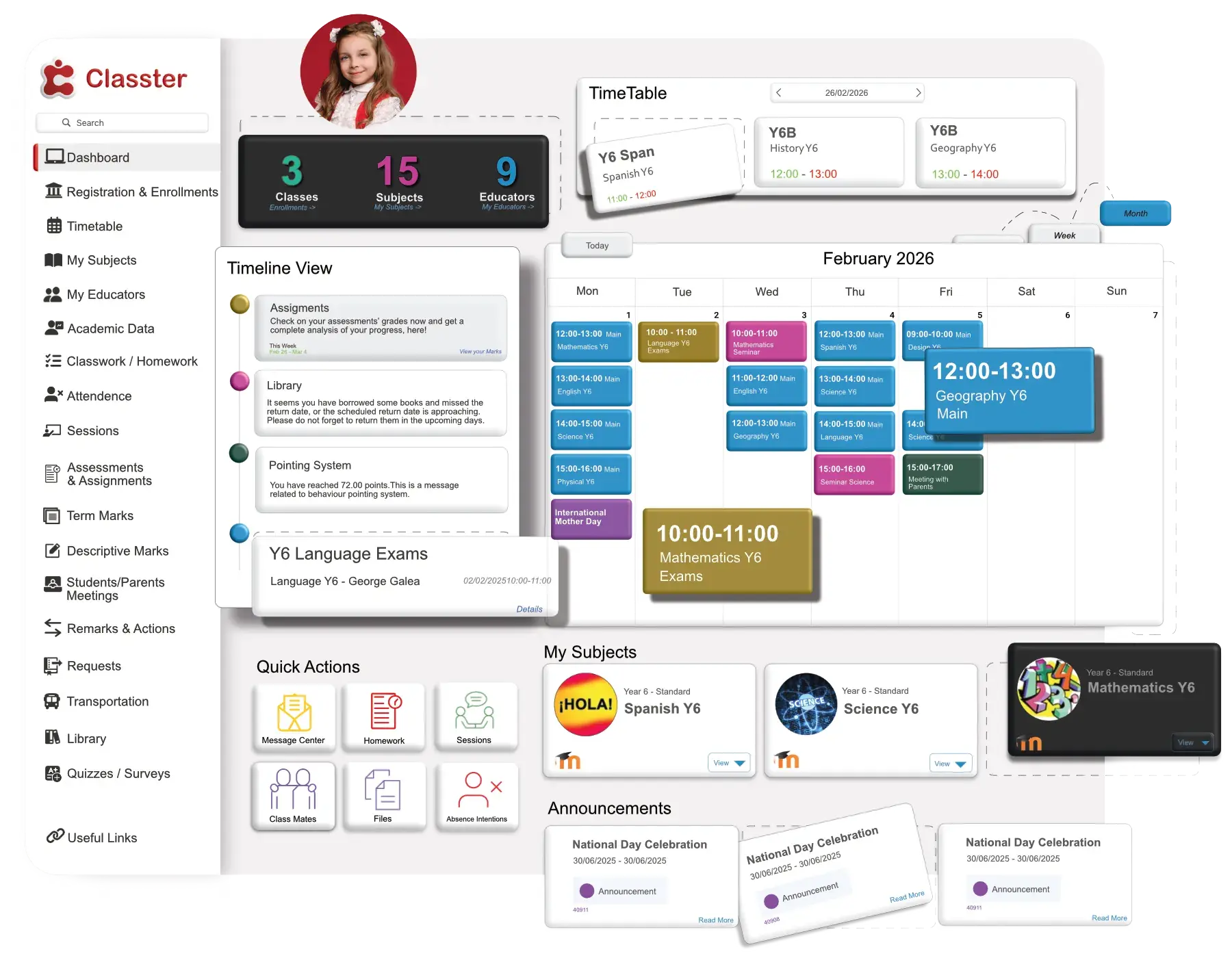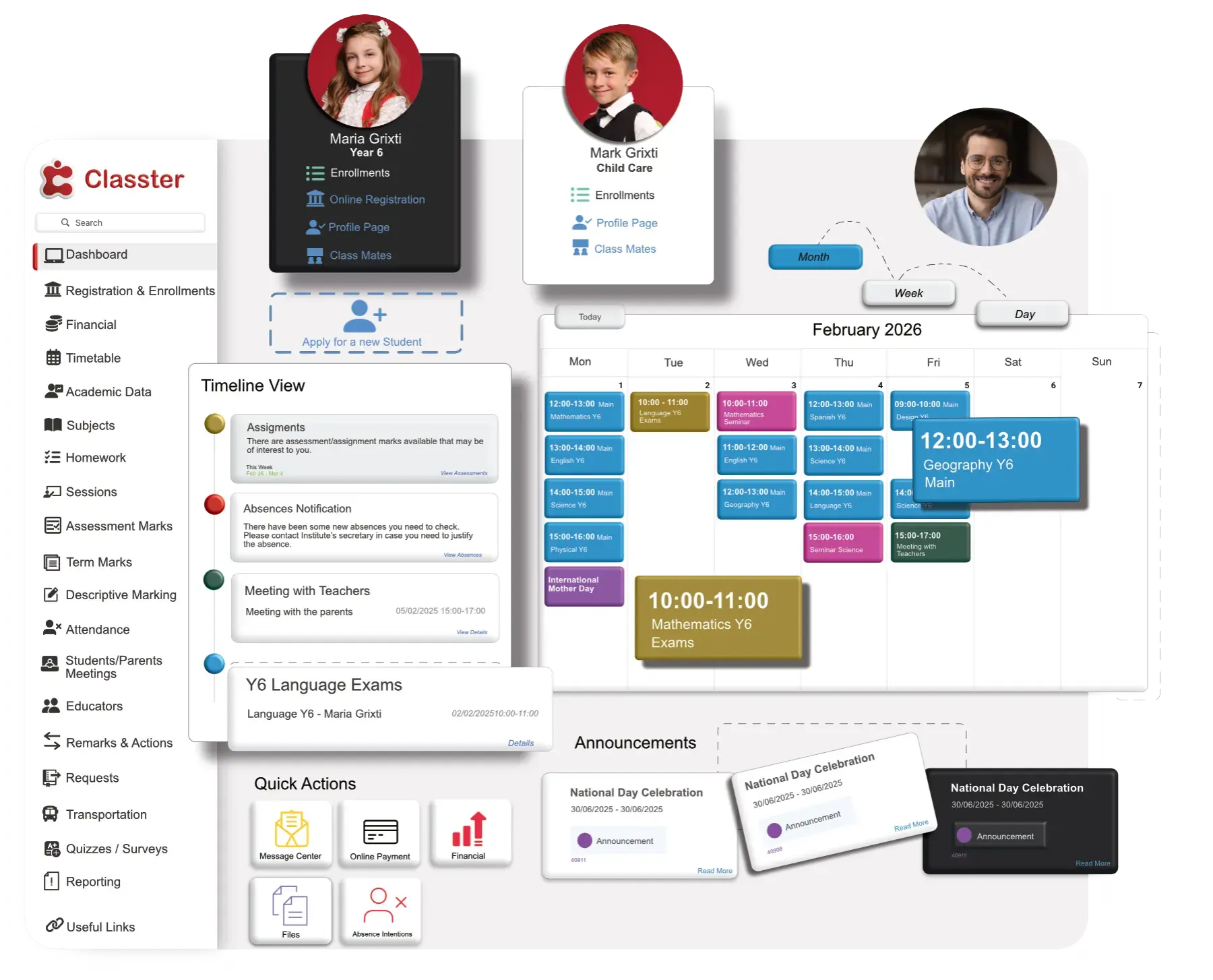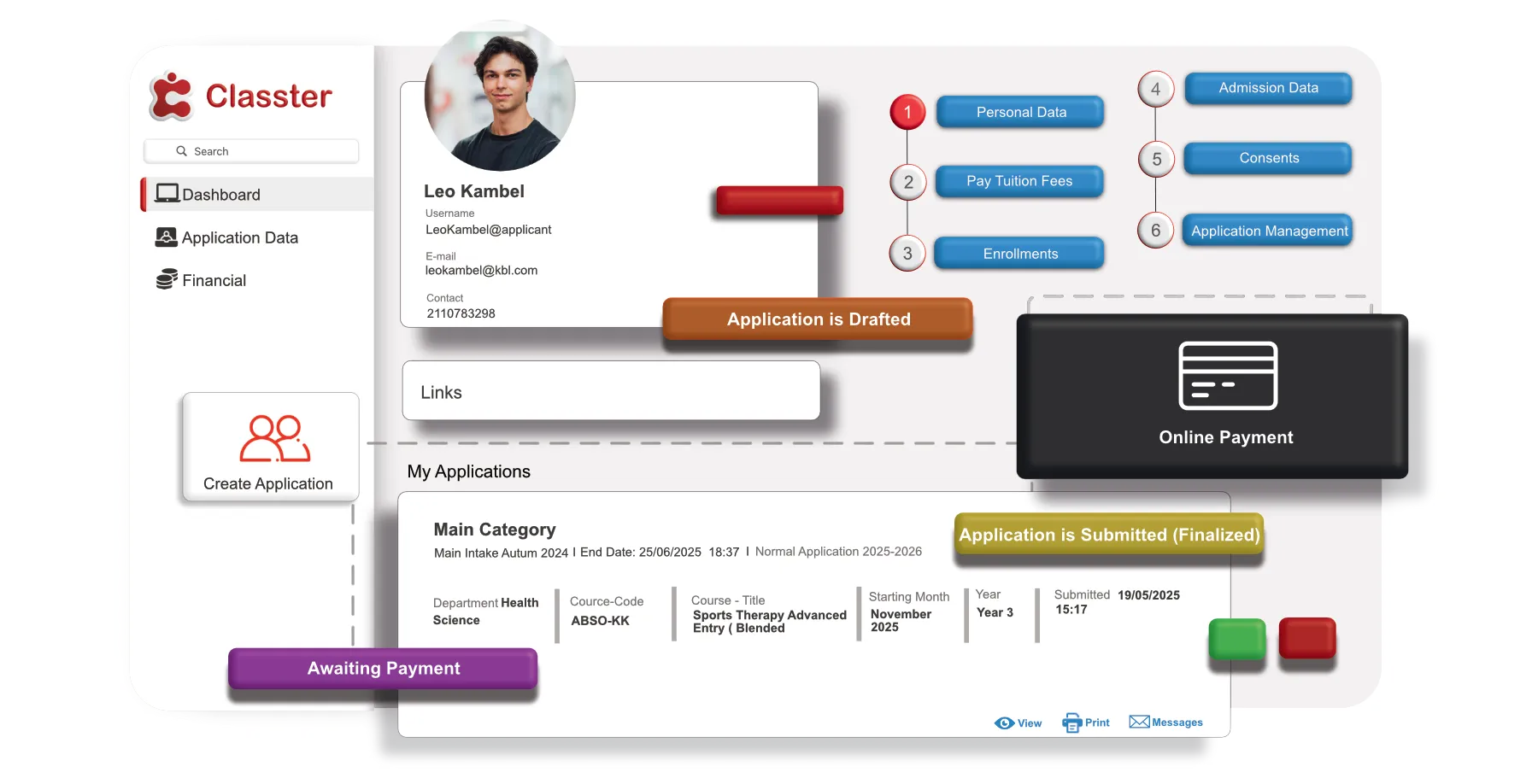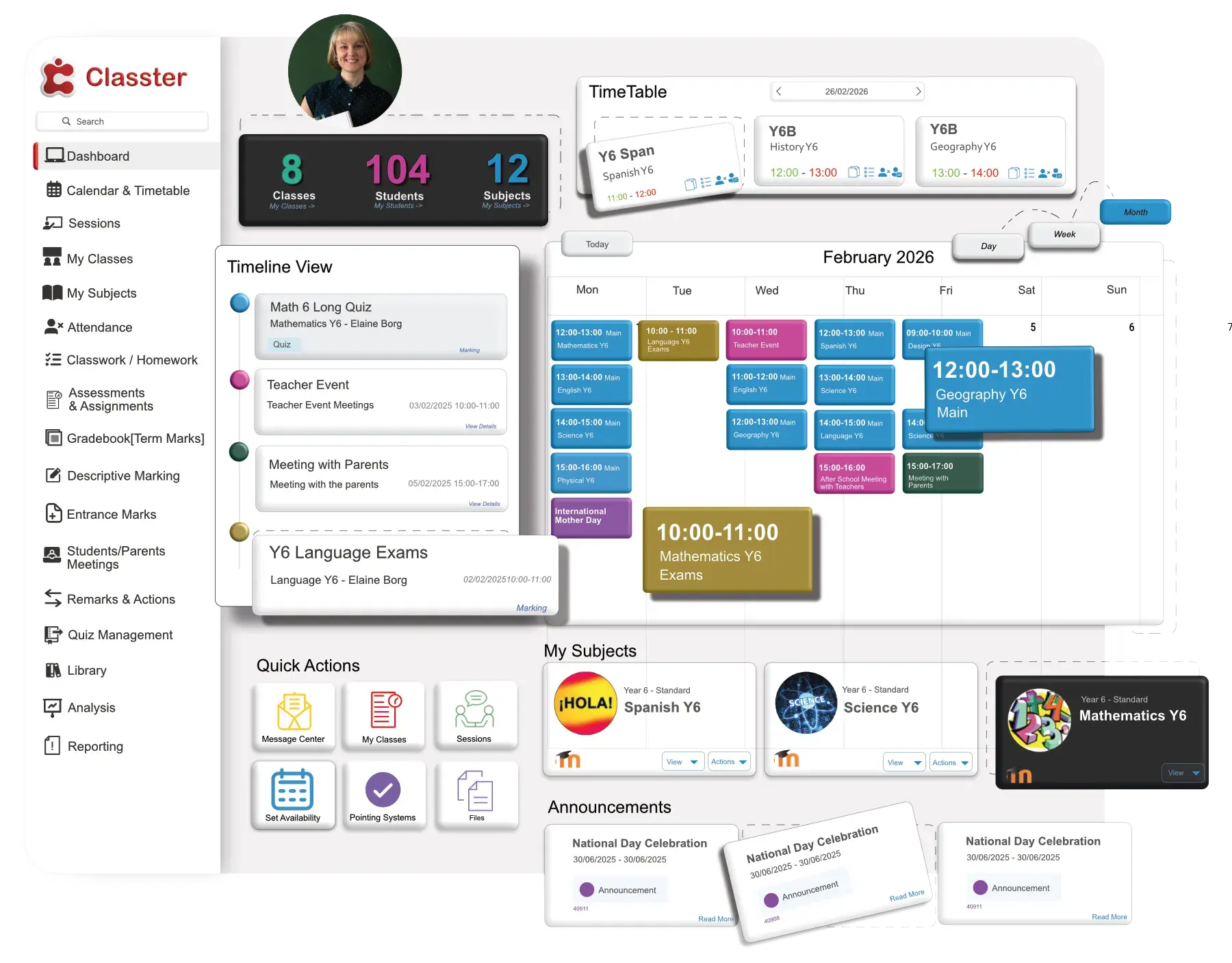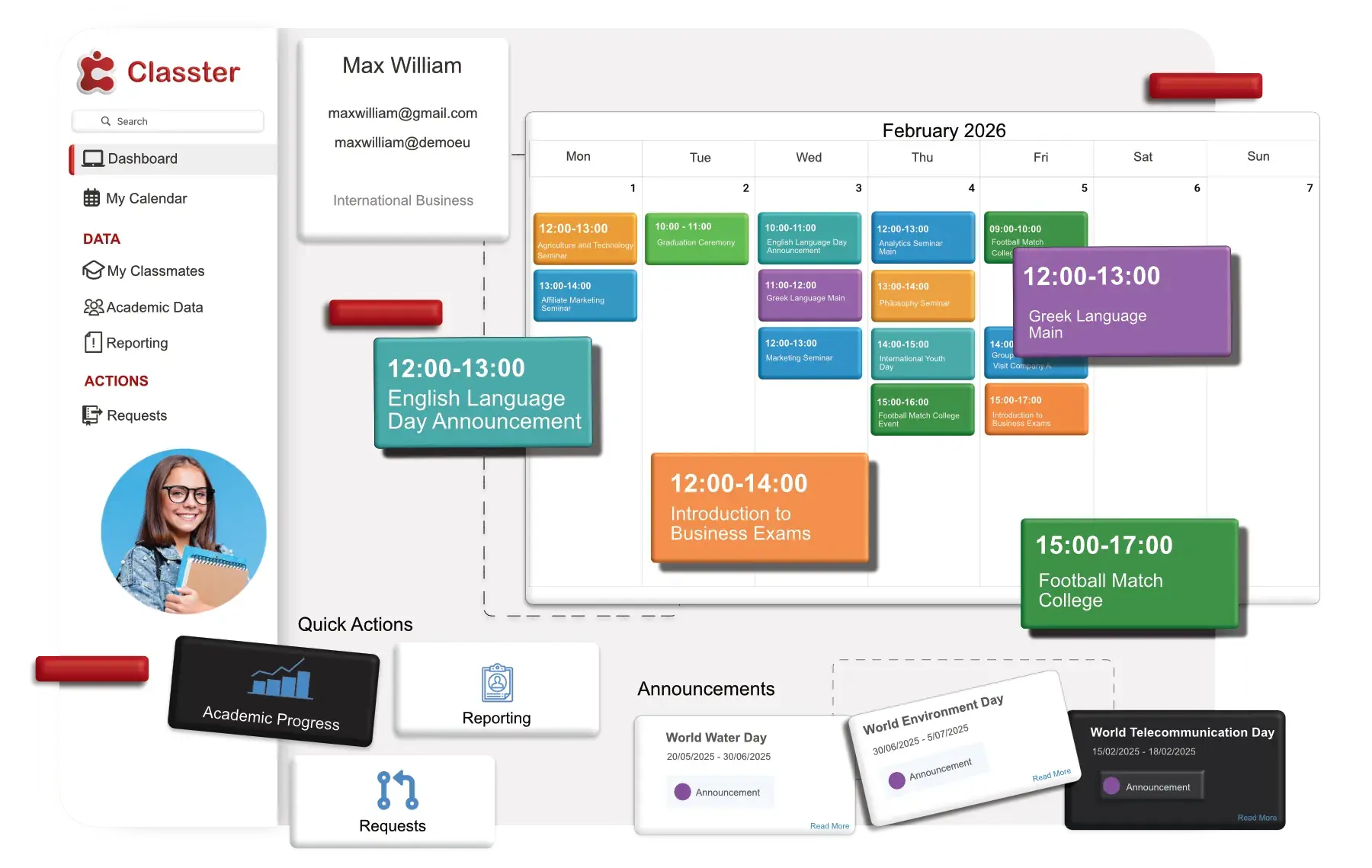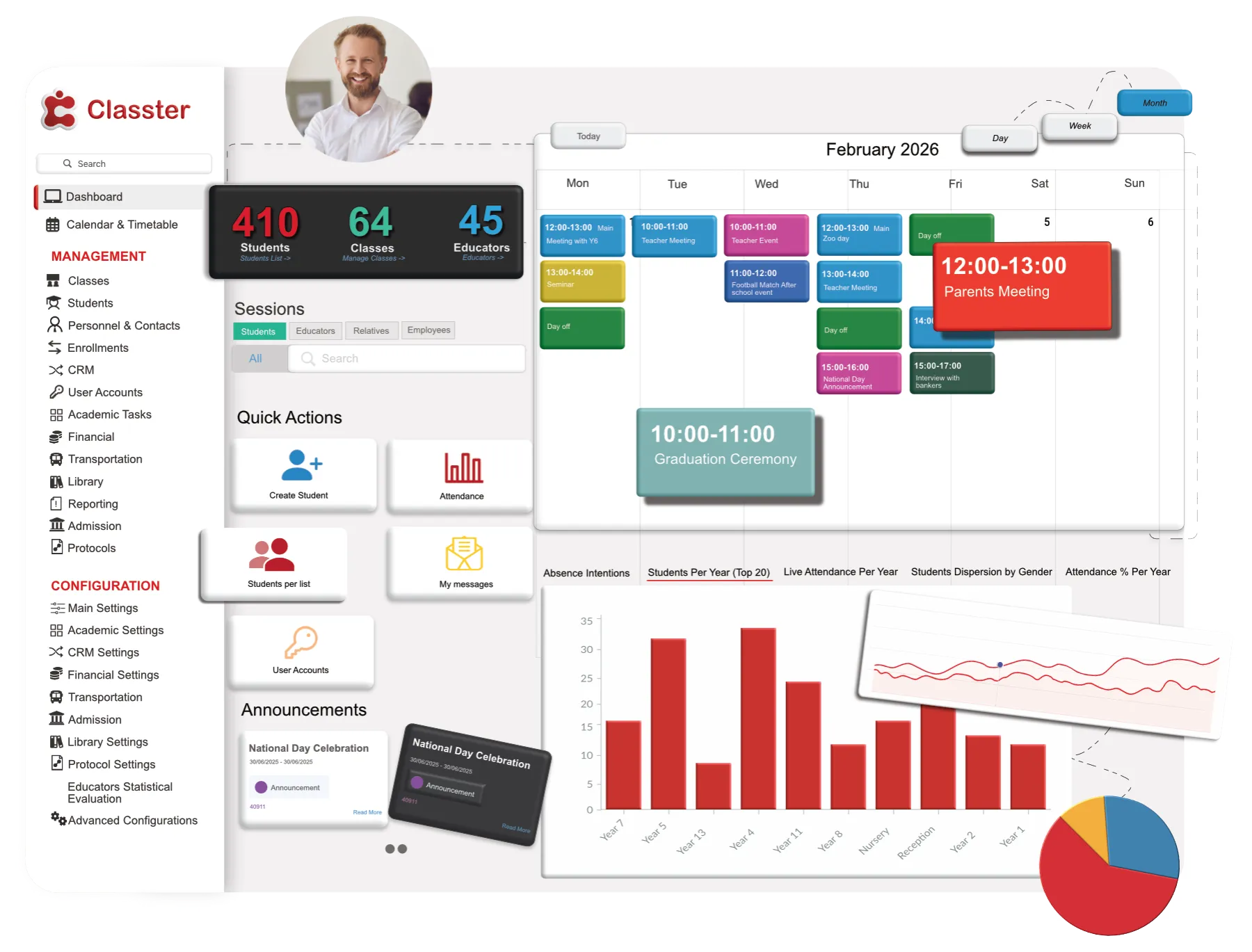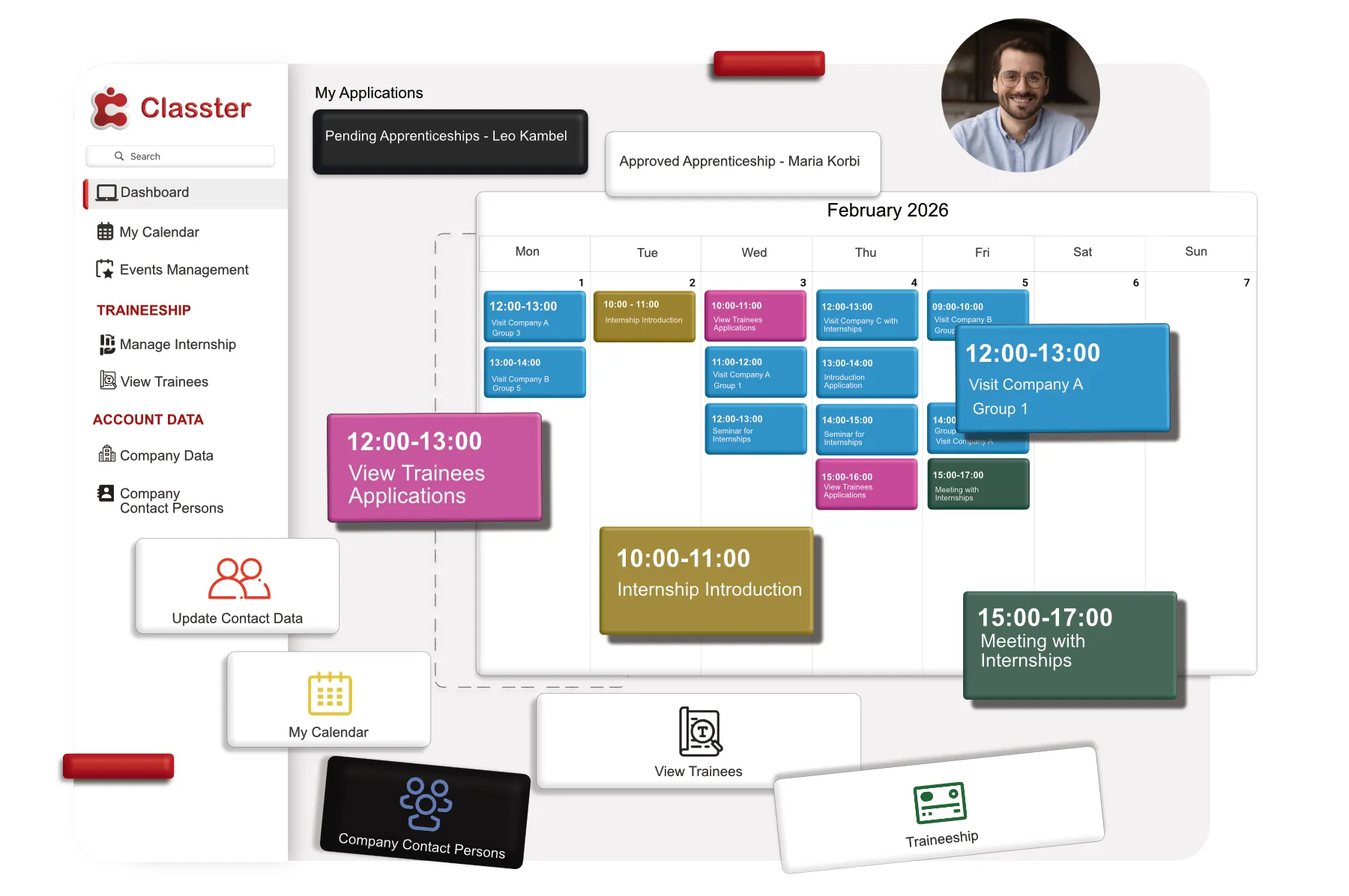Why not make your marking easier?
In this 2-part video series, we dive deep into Classter’s Academic Module, breaking down the essential marking features you need to streamline grading. Whether you’re dealing with numeric or descriptive marks, you’ll learn how to set up marking periods, create criteria, and customize marking ranges for your classes. Plus, you’ll discover how to configure marking scenarios and assessment types that fit your academic needs perfectly. Don’t miss this walkthrough—it’s packed with practical tips to make your work easier!
Download the transcript and use it as your go-to guide whenever you need. Ready to take control of your grading process? Watch now!
Transcript
00:01
Welcome back to Classter Tutorials. Today we will once again talk about the Academic Module, but more specifically about the marking features.
00:10
Marking is one of the basic functionalities that every institution needs to use in the Classter platform as it is essential to all educational institutions’ functionality.
00:22
There are two basic types of marking offered by the Classter platform, the numeric marking and the descriptive marking. Let’s start with the very basics.
00:32
Uh, first of all, to access, uh, to access the marking page, you need to follow the path from the dashed line.
00:41
The dashboard here, to configuration, academic settings, marking settings, and let’s go first at marking periods. The marking period section allows you to define your institution marking, uh, periods.
00:57
For example, first term, second term, semester one, semester two, uh, and more. It is important to have this set up so you may add these periods to your subjects.
01:11
So now let’s see, uh, here we can see the marking, uh, periods of, uh, one institute. yet?
01:21
At the top of, uh, the first card, you can see the name of the academic period, such as first term in this case, here.
01:30
As you move the mouse over, uh, over the section below, you can see which classes, uh, this marking period, uh, applies to.
01:39
For example, here, on, here, here. Year two, year five, nursery, and more. And further down, you can view the start and end date, uh, of, uh, this, uh, specific period.
01:52
Uh, the start and end date, it’s up to you, of course, uh, like all the others. by clicking on the Create New here.
02:01
Uh, you can create a new marking period. Now, let’s see how to create one. Uh, at the description, you can add the description of this marking period, uh, for example, term four, if you want.
02:18
Uh, start date, when will this marking period start, here, and at the end date, uh, when will this marking period end.
02:27
Uh, the weight you can see here, uh, is what weight does this marking period have in relation to the final marking.
02:37
Uhm, for example, you can put 25, maybe 50, whatever you wish. Here, the lock date is the date that all modifications to marking stop.
02:56
The final examination by switching on this option, you indicate that this is the final exam period. Uhm, this may be a two-week period, uh, which, uh, is the final.
03:09
But, uh, that’s up to you, of course. Here, you can, uh, select the, which years this, uh, marking period applies to.
03:16
And that’s it. You are ready by clicking, uh, the save button. Now, let’s go at marking ranges. In this section, you can create and edit marking ranges.
03:32
This defines the scale used to mark, uh, a unit. You follow the exact same steps. The same path from configuration to academic setting, marking settings, and marking ranges.
03:44
You can view the ranges in a grid or card view. You can select this from here. You can view all existing ranges here, both for descriptive marking and numerical marking.
03:57
Yep. You can see all of them together, or you can, uh, separate them. Descriptive, non-descriptive. Uh, once you have clicked on the create new button, a new page will automatically load here.
04:17
Okay. Uh, let’s make an example here with this one. This is like the page from the create new one without this, but, uh, let me explain.
04:30
Uh, at the description, you can add a description. For example, here we have basic zero to 100. Um, at the description.
04:38
Decimals, uh, you, uh, is add how many decimals you want the range to use. Uh, for example, two, here we have one.
04:48
Um, you must keep in mind that descriptive marking rarely would need any decimals. And this, in most cases, the number you put.
04:59
Uh, in this field, you will be zero. Uh, here you have to add the, the starting and ending values from, and to, from zero to 100.
05:13
Uh, and there are base. This value, which is the minimum basic mark, uh, here, the pass mark, here is, uh, this one.
05:21
Uh, this final, uhm, by default switch, this is an option, uh, when, uh, this marking range will be added by default.
05:36
If you want to, and, uhm, descriptive, uh, switch, uh, this option to make this a descriptive marking range. This final option down here, uh, the plus with the range, uh, add descriptions for every numerical value.
05:55
Or a descriptive marking range. You can add full descriptions or alternative descriptions that will appear in reports. As you can see here, we have a description fail, uh, and it’s from 0 to 49.
06:09
Uh, full description is again fail, uh, and you can also add the color. Here we have, uh, red. And that’s all.
06:18
You are ready. Now let’s see the marking criteria. An essential stage in the marking configuration is the creation of marking criteria.
06:31
On the main page of marking criteria you can view either the numeric or descriptive marking criteria. You can select this from here, from the filter.
06:42
Let’s go for the numeric ones. To do this, you need to be logged on the Classter portal as an administrator.
06:51
You can see here that we are logged in as admins right now. To create a new criterion, you need to go to the top right of the page and click on the create new button right here.
07:09
You can enter an abbreviation, but it’s optional. As you can see, there is no asterisk here. Uh, enter a description, uh, it is required, of course.
07:19
Uh, choose category if you wish to add this criterion to a specific category, uhm, for example, uhm, at entrance exams.
07:35
You can enable the descriptive switch, uh, if this is to be used as a descriptive marking criterion, of course it’s optional.
07:46
And like that you can create, uh, a new marking criterion. From the main page, you of marking criteria, you need to click on the descriptive button to view all descriptive criteria up here.
07:59
Find the criterion you wish to edit and click it, uhm, the edit button next to the description. Here you can select here the edit.
08:13
If, uh, you click you can change, uh, some things if you want. Click on the plus button right here, uh, to add some sub-criteria if you wish, uhm, Fill in the required fields for the new sub-criterion, then save.
08:40
The only required is the description, as you can see. Categories are groups, uh, that allow you to better organize the criteria you create by categorizing them in the main page of, uh, marking criteria.
08:58
Um, you will notice a button on the far left of your screen that is named Manage Categories. Here, Manage Categories.
09:13
It’s, uh, the categories we put before entrance exams, for example. You can also create new if, uh, you wish. If you want to manage, uh, the existing categories, you can delete, uh, by clicking on Delete.
09:28
You can edit and you can also add a color if you want to. Okay. And then we have, uh, the marking scenarios.
09:40
Uh, marking scenarios are here to group marking criteria together, so you can apply multiple criteria to units. This helps, uh, in cases where units follow the same marking methods.
09:55
You can also create multiple scenarios for each individual, uh, for each individual unit according to your academic requirements. By clicking on a scenario, you can create and see the details, uh, of the scenario.
10:13
You can, uh, edit it, and so on. You can also delete it, of course. To create a new marking scenario, click on, uh, the Create New Marking New Numeric Marking Scenario, or Create New Descriptive Marking Scenario, uh, whatever you want this to.
10:36
Let’s create a new numeric, uh, marking scenario. Add the description, at the description for this scenario, whatever you want to.
10:46
Uh, let’s add, Test Scenario, oh, sorry, okay.
11:03
Uh, the default switch is used to make the new marking, uh, scenario the default one. Uh, add the specific marking criteria from here, uh, allows you to select, uh, one or more marking criteria to be added, uh, to the scenario.
11:21
For example, here, uhm, Teamwork and, uh, effort, and we click on save. If you want to deactivate the, the one of these two, you can just click on the off.
11:47
You can disable or enable the criteria. Which you will like, uh, to use in this specific marking scenario. Uh, it’s very easy by switching, uh, on the enable use, uh, of the criteria.
12:01
You click on save and you are ready. At the assessment type, uh, section, you can create assessment types. The assessment type is linked to an assessment and provides a set of properties and functional behavior.
12:23
Uh, you can view all the types. All the, uhm, assessment types in a list, here, for example. Uh, you can export, uh, or print the list of assessment types.
12:37
Uh, it’s all here at the buttons. You can print, uh, you can have an Excel, a CSV, whatever you want.
12:46
First, you will need to describe the assessment type, uhm, here, for example, we have, uh, classwork, exams, homework, okay, quiz, okay, let’s see.
13:04
If you want to create a new class, one, you, you click again on the create new button. First, you will need to describe the assessment type, for example, here, we have, uh, the quiz, so, description is quiz.
13:19
Uh, fill in the marking grades to be used when marking assessment of this type. Here, we chose basic, from 0 to 100, enter the numeric passmark for this assessment, it’s 50%, select the decimal type, uhm, here we have custom, in this field, users can select from several options, as you see, as you can
13:47
see here, you can choose whatever you want, in the property section, right here, uh, of the form, you can click on options you want for this assessment types, option include, uh, enable, uh, enable files, uh, anonymous mark, uh, classroom selection, uhm, weights, outcomes, final mark from outcomes,
14:17
Uhm, and so on. You can view all these, uh, options here. Uh, once you’ve learned, uh, you can also put some calendar and notifications here, uhm, calendar, default calendar category, you can, uh, put.
14:42
exams for example, and here you can make, uh, your own, uh, settings. You click on save and you are ready.
14:55
Once you’ve learned to configure your settings, uh, with easy and simple steps, in the next video you will take a detailed look at each webmarking scenario.
15:04
See you in the next video. Bye-bye.
FAQ’s
Classter streamlines marking with automated tools for numeric and descriptive grading, customizable marking periods, and scenarios, allowing educators to focus more on teaching than administration.
Classter offers numeric marking and descriptive marking. Numeric marking uses scores, while descriptive marking focuses on qualitative feedback for students.
Under Configuration > Academic Settings > Marking Settings > Marking Ranges, you can create new ranges, define the start and end values, set decimal preferences, and assign colors for easy identification.


